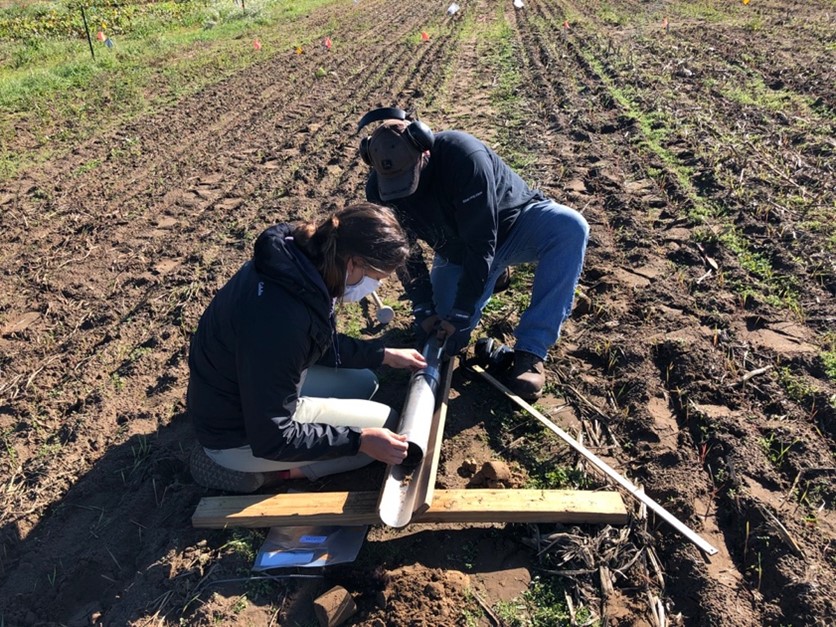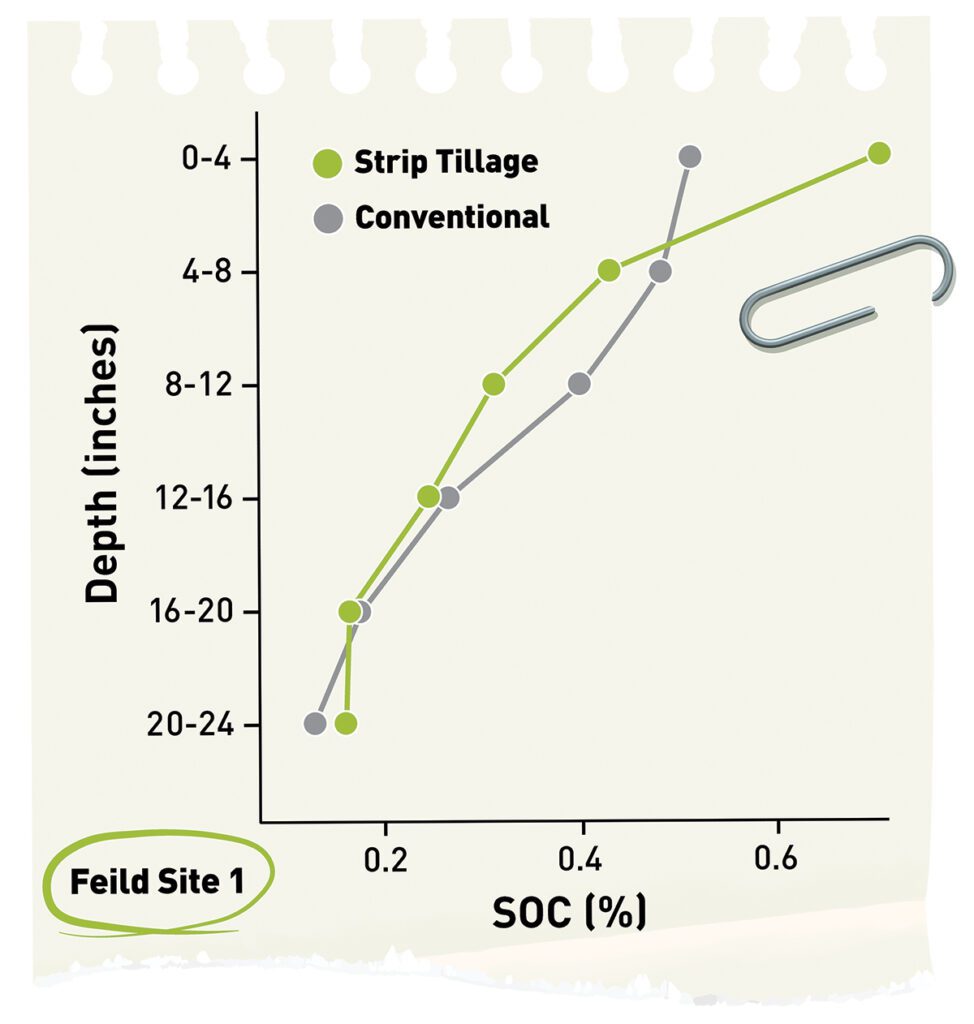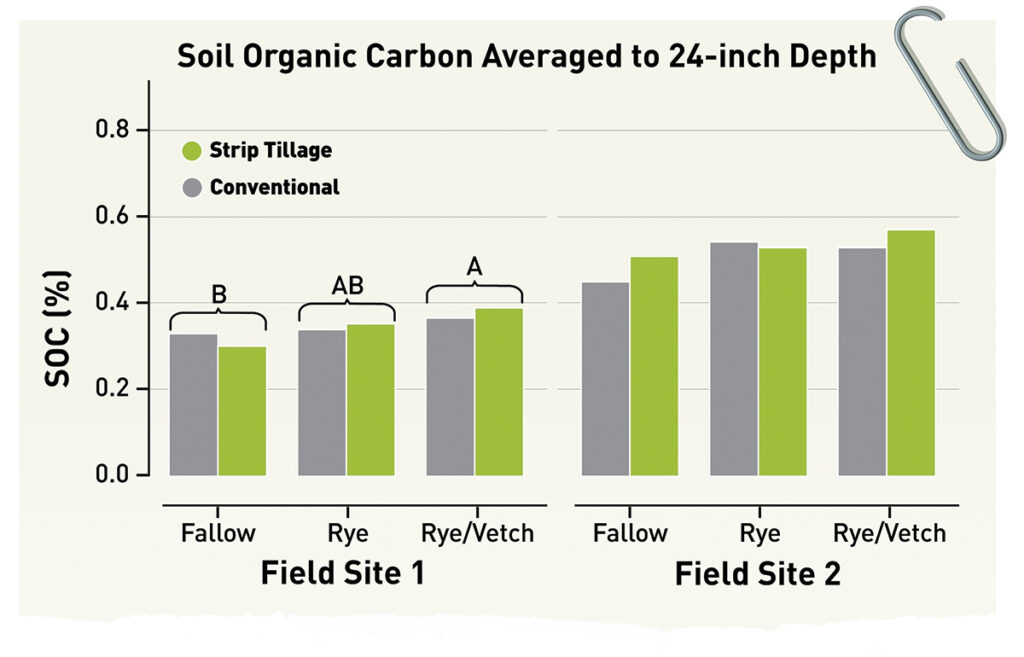Nov 6, 2023Building organic matter on sandy soils
Soil organic matter (SOM) is often considered the foundation of a healthy soil because it mediates many biological, chemical and physical soil properties — from water holding capacity to nutrient availability.
Strategies for building SOM generally depend on either increasing organic matter inputs (through cover crops, manures, composts and other organic amendments) or decreasing organic matter losses, typically by reducing tillage.

For vegetable farms with sandy soils, building SOM can be especially challenging. The benefits of tillage for preparing seedbeds, warming soils and controlling weeds in high-value crops, along with the limited capacity of sand particles to bind and protect SOM, are key barriers. Yet studies also show that sandy soils, with their inherently low water and nutrient holding capacities, stand to see the greatest benefits from increasing organic matter levels.
Long-term research
Since 2009, we have been conducting a long-term field experiment on sandy soils at two sites in southwest Michigan to better understand how reduced tillage and the use of winter annual cover crops impact vegetable production systems over time.
In this experiment, conventional full-width tillage practices (spring moldboard plow plus field cultivation) are compared to strip tillage, a form of reduced tillage in which we use a Hiniker 6000 strip tiller to prepare a 10-inch wide by 10-inch deep strip where the cash crop is planted. Approximately 20 inches of soil is then left undisturbed between crop rows. In addition, the use of different winter annual cover crops (no cover crop, winter rye, and a rye-hairy vetch mixture) are evaluated under both tillage systems. Each year, the two fields grow a different crop within a three-year vegetable rotation of sweet corn, snap beans and a cucurbit (squash or cucumber).
With more than 25 site-years of experience now, we’ve learned a lot about the agronomic benefits (and tradeoffs) of implementing these soil health-promoting practices. In short, strip tillage and cover crops can increase yields by up to 10% on average, but results vary depending on the weather and other factors in a given year. Adjustments to weed and nutrient management are also important to make the system work.
But what have we learned about their capacity to build soil organic matter?
After 10 years of management, we collected soil samples in 4-inch increments down to 24 inches to determine the effects of cover cropping and tillage on SOM accumulation and distribution. We measured soil organic carbon (SOC), which serves as a common proxy for SOM. Based on these data, here are some key lessons learned.
Shallow soil sampling doesn’t give the full picture
We found that strip tillage (especially when paired with cover crops) significantly increased SOC near the soil surface, but this increase was accompanied by a reduction in SOC below 4-inch depth relative to plowing (see graphic below). We are still understanding the agronomic significance of these tillage-induced changes in SOC distribution for crop performance. For example, concentrating the soil structure, nutrient cycling and moisture holding benefits of organic matter near the surface may be beneficial for crops, particularly during early establishment. Alternatively, distributing these services deeper into the soil may encourage greater root exploration later in the season.

However, what is clear from our research and other similar studies is that not sampling deep enough may overestimate the benefits of reduced tillage for total carbon accumulation. That said, the differences observed in these fields (including due to cover crops) were still mainly in the top foot of soil, well within reach of an average soil probe.
Inputs are essential for building organic matter
While strip tillage itself did not result in significant SOC gains when averaged over the full sampling depth, biomass inputs from cover crops did (see graphic below). In Field 1, planting a rye/vetch mixture increased overall SOC by 23% relative to no winter cover crop. Despite a similar trend in Field 2, differences were less pronounced and not detected as statistically significant, which may be due to higher SOC levels in that field overall. Building soil organic matter is not a fast process, but cover cropping can be an effective strategy regardless of tillage practices.

The research continues
With support from USDA’s National Institute of Food and Agriculture and the Soil Health Institute, we continue to investigate the diverse effects of tillage and cover cropping on a range soil health metrics, soil organic matter characteristics, and practical impacts of soil changes to crop productivity and resilience. For further details, future updates or questions and comments on this research, feel free to email [email protected] or [email protected].
— Alyssa Tarrant, Zack Hayden, and Dan Brainard, Michigan State University Department of Horticulture
















